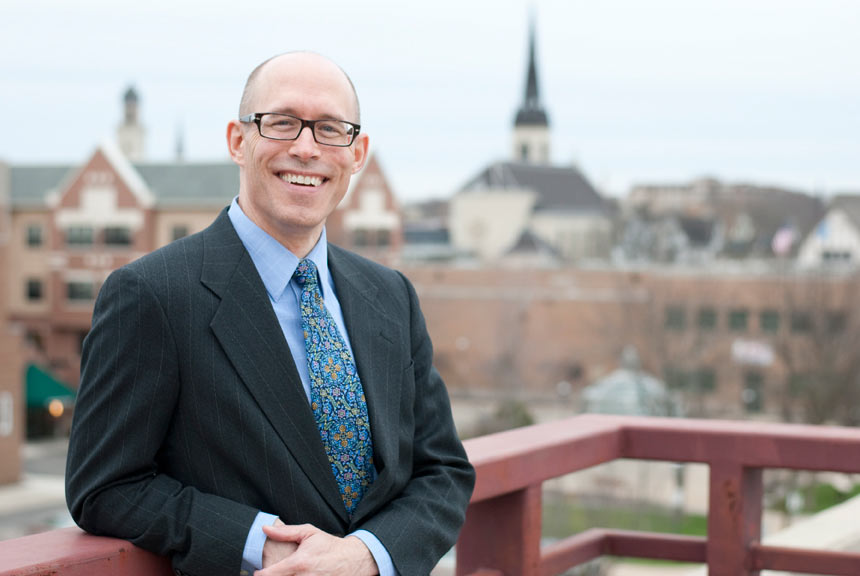Letter to the Editor
Rep. Scott Allen explores energy option for Wisconsin
Two cities, same question but different degrees

Let those with highest stakes lead arena pitch
Years ago there were primarily two major attractions in downtown Waukesha: the library and Discount Liquor. Downtown was struggling. Many people who lived in the city avoided the downtown and those who lived in the rest of the county never really had any experience with downtown.
At the time there was this little community theatre group known as the Waukesha Civic Theatre. The group produced and performed plays and musicals on a small stage in a run-down former industrial building west of downtown in a residential area on Washington Avenue.
Fortunately there were some real estate investors and developers who had an unwavering belief in the potential of downtown Waukesha. When others were choosing to avoid downtown, they were choosing to buy properties, build new buildings, and renovate old buildings.
One of those developers owned the old PIX movie theatre. He approached the Waukesha Civic Theatre with the idea that he would gift the building to the group if they could figure out a way to use it.
The Civic Theatre board of directors, excited about the opportunity, began to explore what it would take to utilize the old movie house. Concept plans were drawn up. Building evaluations performed. Estimates obtained. It would require over $1.5 million to renovate the structure to use it as a live performance venue.
How could a small organization with an annual operating budget of less than $100,000 raise over $1.5 million dollars to accomplish this dream?
Frankly, it took vision, leadership, diligence, and faith.
It meant reaching out to philanthropists – community leaders who had the means, who genuinely cared about their community. If it weren’t for the leadership of philanthropists, whose vision extends beyond the current generation, the Waukesha Civic Theatre project in downtown Waukesha would not have been possible.
Philanthropy is for more than just millionaires. It is for everybody with any sustainable means.
The Civic Theatre board of directors organized a capital campaign and with the commitment of a handful of community leaders, of philanthropists, began a program of reaching out to the community for support. Presentations were given. Meetings were held. Naming rights for many of the theatre components were offered. And even bricks were sold. Large donors and small donors were offered an opportunity to participate in an exciting community improvement project.
Success was not certain. Of course, the project ended up costing more than the estimates suggested. There were times when the board and the campaign committee felt frustrated and even had some doubts, but the folks involved refused to give up. The board and committee members kept working, kept believing, and kept asking.
As you know, the Waukesha Civic Theatre now operates in the old PIX movie house in downtown. It is now a major attraction in downtown where thousands of people each year are challenged, enriched, and entertained. It is a cultural cornerstone of Waukesha.
These days we hear about the need in Milwaukee for a new basketball arena to help retain the Milwaukee Bucks. It is suggested that the presence of the Bucks in Milwaukee helps the stature of the region and that professional basketball is a major attraction that brings an economic benefit.
Let us assume that those statements are true and a new arena is a worthy community project. How should we go about the process of funding that project?
It seems to me that opportunity for leadership exists for those who are arena advocates. It seems to me that they need to compile the facts and make the case to the community. If the case is strong enough, if the advocates are passionate enough and faithful enough, then private funding of the project is not just possible, but inevitable.
There are differences, of course, between the two cases. Certainly a new arena is a larger project with a bigger price tag. Professional sports versus volunteer arts. For profit versus non-profit. High-profile versus low-profile. Yet I believe the illustration is scalable to the Milwaukee region.
The players who have the most to gain should contribute the most and take the lead. They should be willing to assemble a good case and then make that case to Milwaukee area philanthropists. It will not be easy, but what better way is there to find out if the people of metropolitan Milwaukee support the project.
It is far too expedient to force the issue politically, to force elected representatives to take a position in favor of keeping the Bucks or being responsible for their departure. If that is the approach of new arena proponents, they will lose, and, unfortunately, the Milwaukee region will lose.
It is time for leadership. The question is: who should lead? Those with the greatest stakes.

